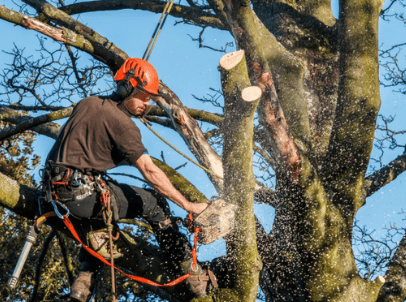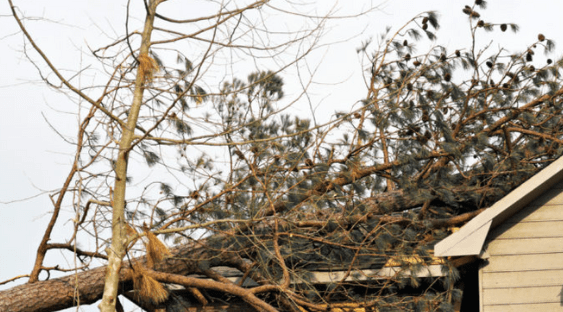
It usually comes as a shock to people when they realise how many trees there are in the UK. Do you have any idea? Five million, maybe? Twenty million? Six hundred million?
The answer is approximately three billion!
Of those, around 16% are in urban areas. While it's not easy to estimate exactly how many are in and around residential areas, we can be fairly certain that there are roughly 8.4 million trees in the Greater London area. And, of course, there are plenty more in other cities, towns and villages around the UK.
With so many trees, either growing or fully mature, branches overhanging a neighbour's property boundary are almost inevitable. Whether you're the tree owner or it's the neighbour's tree, there's always a risk that the branches could fall, damaging property or causing injury.
Aside from this, fallen leaves, fruit, and debris can be a nuisance, cluttering up your garden or creating a slip or trip hazard. Rotting fruit also attracts wasps and other bugs, which can be a nuisance. So, when it comes to overhanging trees, what does UK law have to say on the matter? If you need to hire a professional tree surgeon to trim overhanging branches, who foots the bill?
In this special Tree Surgeon Pro blog, we're looking into this often sensitive area to bring some clarity, helping you avoid legal entanglements and any unpleasantness that frequently accompanies these issues!
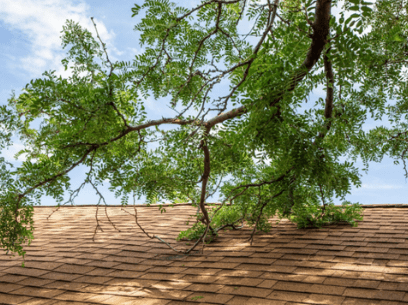
As you might expect, when discussing legal issues, things can get a bit murky. If you've already Googled about this topic, you've likely been given some conflicting, if not completely inaccurate, advice!
This is especially so if you've fallen victim to the dreaded 'AI overview', as this tends to scrape information from various web page sources without assessing it, and then cobbling it together to form a (fairly) coherent answer.
Well, Tree Surgeon Pro is here to clarify the issue, offering sound, sensible and accurate advice and information that will put your mind at ease.
Let's start with some simple facts...
Many homeowners are concerned that they may not have the right to chop down branches overhanging their garden, fearing the potential legal consequences or an angry response from their neighbour. So, what does the law have to say on the matter?
Under the UK law called "The Right to Abate a Nuisance", you are perfectly entitled to trim, cut or otherwise manage any overhanging branches from a neighbour's tree, but only up to the boundary line.
As long as you don't enter your neighbour's property (which could be classed as trespassing) or cut beyond the boundary, you are allowed to remove any branches that encroach on your garden.
This applies, in essence, when a neighbour's tree overhangs your property boundary and the branches are causing a nuisance or you're concerned about potential damage if they fall during high winds.
So far, so good - but there is a caveat to keep in mind...
You need to be 100% sure that the tree is not protected by a Tree Preservation Order (TPO) or is situated within a conservation area. Under these circumstances, certain trees have special protection and you must seek permission from the local council to undertake any kind of work on them.
Failure to do so can result in a large fine, usually around £20,000, but this can be unlimited in some cases.
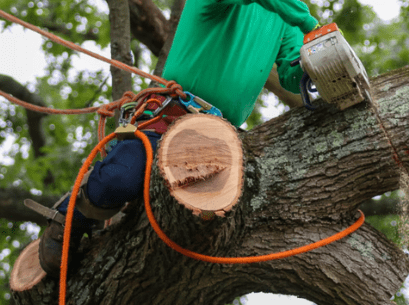
Once the tree branches have been trimmed, you can't simply throw them over the fence! Aside from the dangers of causing damage or injury, you will technically be fly-tipping. Yes - even though the waste belongs to the neighbour's tree, you have created it by taking action, so you are responsible for disposing of it.
However (and here is where UK law gets a bit silly), you have a legal obligation to offer the cuttings to your neighbour first! But wait, it gets better: they don't have to take them. Also, you can't force the tree owner to remove fallen leaves or fruit from your property, but you don't have to offer these 'natural' occurrences to them by law.
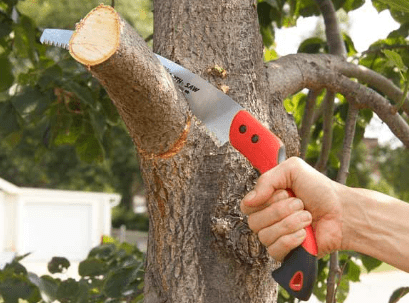
There's always a chance that you may upset the person to whom the tree belongs if you start cutting off random branches or hire a tree surgeon to do the job. This is because you could change the tree's appearance and affect its symmetry.
The good news here (from your perspective, at least) is that they have no legal recourse, as you are fully within your rights to cut them back. You don't need their permission, but remember, you do need to offer them the cuttings.
Even so, in the interests of getting along and keeping the peace, we always recommend having a friendly chat with your next-door neighbour before taking any action.
So much for the law, then, but what about the financial aspect? Who foots the bill if you need to hire a professional tree surgeon to do the job?
Well, here's where things get a bit murky, so pay close attention...
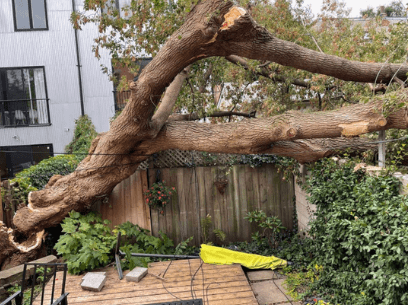
We need to be very careful here, as this involves delicate legal issues. So, let's take things one at a time to make sure everything is clear! For example, when considering overhanging trees, it's important to know when is the worst time to prune trees in the UK and when is the best time to prune trees in the UK, as timing can affect both tree health and legal responsibilities.
When it comes to large trees with big branches, there's always a worry that they may break and fall, causing damage or injury. In these cases, it is the tree owner's responsibility, and they are liable for any costs related to damaged property or personal injury.
However, they have no legal obligation to cut the tree at any point, unless it is deemed to be unsafe. In other words, they are responsible for making sure that it doesn't pose any danger or cause damage. If it's simply a case that you object to the branches encroaching on your property, but there's no risk involved, then the law regards it as your responsibility to cut them (this applies to shrubs and hedges as well).
And because you have decided to act, then you foot the bill. You may find websites suggesting that the tree owner pays the bill, whatever the circumstances, but this is a misunderstanding of the law as it currently stands. Sadly, it's rarely that simple!

This is a difficult one, as it generally requires an expert to assess the tree for signs of disease or weakness.
Here's a quick overview of the facts:
If you're not being harmed by the tree, but you want the branches gone, then you have to take action within the law and at your own expense. That is, you can trim them back, but you have to offer the arisings (the waste cuttings) to the owner.
Your neighbour is not obliged to take proactive action to cut the tree back, unless:
However, if you have proof that the tree branches are causing problems, such as damage to your roof, walls, foundations, etc., then the owner may be liable for any works to put things right, including pruning or even the removal of the tree.
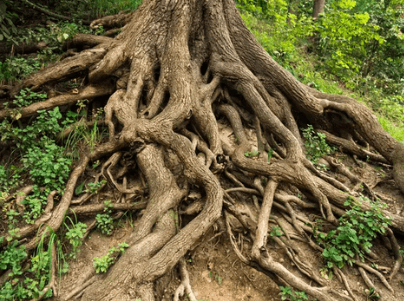
It would be remiss of us to talk about overhanging branches from a tree in a neighbour's garden without mentioning the roots.
These can be as damaging as a stray branch hanging over your fence - if not worse! Roots can interfere with walls, paths, service pipes and foundations, causing thousands of pounds worth of damage, not to mention the disruption and upheaval involved in fixing the problems.
So, what's the legal position regarding the cutting of roots?
Actually, you have the same rights here! If a neighbour owns a tree, and its roots are damaging your property or creating problems, you can dig them up and cut them out.
...However!
...There are a few very important rules to keep in mind here:
The last point is worth remembering, as it turns the tables, making you responsible. While it doesn't seem fair, it's the law, and it's really not worth the risk!

Picking through the intricacies of UK law concerning trees isn't always an easy task! While you're within your rights to cut back trees or roots yourself, you have to do so with caution and make sure you don't go past the boundary. Also, you can't enter another person's property without their consent, or you could be accused of trespassing.
And given the legal issue we referred to above, where you could be liable if the neighbour's tree falls, it's wise to seek advice before doing anything at all. You might be wondering, 'What do tree surgeons do?' Well, these professionals assess and manage tree health, but even their expertise won't help with legal matters unless proper consent is obtained.
It's not, as some would have it, a simple case of, "It's their tree, so they are responsible for the costs."
So, you can't hire a tree surgeon and get them to do the work, and then present the bill to your neighbour! They are well within their rights to refuse to pay.
Our best advice is to speak to your neighbour first and see if they mind you snipping away at a branch or two.
If you don't have this kind of relationship with your neighbours, try contacting them anyway - most people out there are willing to discuss things in a friendly manner. If not, try not to react negatively, just point out that you have the right to take this action and that you were asking out of courtesy.
If you have concerns about the state of the tree and the possibility of potential damage, discuss this with them and suggest that they hire a professional tree surgeon to assess its condition. You could even propose that the cost be split between you, as this is a good way to prevent animosity.
Above all, try to keep things amicable and avoid threats of legal action as far as possible - few people really want the hassle and it just sours the relationship further.
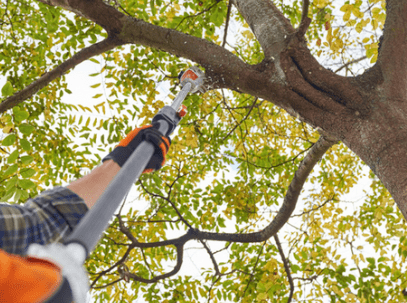
While we've suggested a possible way to proceed, we understand that it's not always that easy!
As a professional tree surgery company, we've encountered our fair share of scenarios where a dispute has arisen because a neighbour's tree overhangs a boundary.
In these cases, we are prepared to mediate between the two parties to bring a satisfactory conclusion.
Here's an idea of how we can help...
To begin with, we can assess:
This objective evidence can help defuse disputes by shifting the focus to the tree itself, rather than the people involved.
Our professional arborists are trained in the legal framework around trees in the UK, especially:
They can explain to both parties what’s lawful and what would constitute trespass or damage, which often helps to calm heated discussions.
If the disagreement escalates, the tree surgeon can provide a written report or quote detailing:
This can serve as evidence in communications, mediations, or court proceedings. Our arborists can act as expert witnesses if the situation turns truly legal.
Because they’re professionals, our tree surgeons can often act as a go-between, especially when neighbours have stopped talking directly. Their presence can:
Our experts can advise on the safest and least disruptive way to carry out pruning, which may reassure the tree owner that their tree won’t be hacked back carelessly. In some disputes, the concern over damage is a big sticking point.
While it's not their core job, our experienced tree surgeons have seen plenty of neighbour disputes and know how to speak to both sides calmly. If or when you need help in this area, Tree Surgeon Pro is ready to offer professional assistance.
